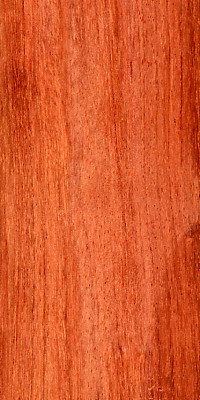

The exotic species Bubinga is a choice material for a sustainable perspective: it is resistant to moisture, fungi, dry wood borers and termites. It is therefore not necessary to treat it to preserve it against these various aggressions, which is both an ecological and economic asset.
Tropical wood Bubinga is sought after in exterior joinery, but also in cabinet making, for example in the manufacture of luxury furniture.

Guibourtia demeusei, Guibourtia pellegriniana, Guibourtia tessmannii
Family: FABACEAE-CAESALPINIOIDEAE (angiosperme)
Commercial restriction: No commercial restriction
Suppliers: Bubinga suppliers
The tropical tree Bubinga is a very large tree found in the Congo Basin: it is up to 60 m high and 2 m in diameter!
It can be recognized by its large, sinuous buttresses, which develop from a brown, rough bole, then marked with age by reddish depressions.
Locally, the essence Bubinga is widely used in traditional medicine for its bark and leaves.
The exotic species Bubinga is a pinkish to reddish-brown wood, very finely veined with purplish red. It is a heavy to very heavy, hard to very hard wood and a durable species as it resists well to fungi, dry wood borers and termites, as well as moisture. It is therefore not necessary to treat it.
These characteristics make it a tropical wood suitable for many uses that require solid and durable materials :
Bubinga is a tropical essence also sought-after for indoor use, thanks to its solidity and aesthetic qualities :
The tropical tree Bubinga grows in the forests of West Africa, in the Congo Basin: it is found from Nigeria in the North to the Democratic Republic of Congo in the South.
The Bubinga grows in dense evergreen rainforests.
The tropical species Bubinga belongs to the genus Guibourtia, of which a number of species are exploited and are of great commercial importance. Timber marketed under the name "Bubinga" actually groups together 3 species, whose wood has similar characteristics: Guibourtia demeusei, Guibourtia pellegriniana, Guibourtia tessmannii.
We can distinguish G. tessmannii and G. pellegriniana by notching the bole: the first one exudes a reddish gum, while the second exudes a light yellow gum.
See the Tropix sheet of Bubinga (CIRAD).
See the Tropix sheet of Bubinga (CIRAD).
See the Tropix sheet of Bubinga (CIRAD).
See the Tropix sheet of Bubinga (CIRAD).
Sources :
Copyright photo: Q. Meunier, C. Moumbogou, J.-L. Doucet, 2015, Les arbres utiles du Gabon